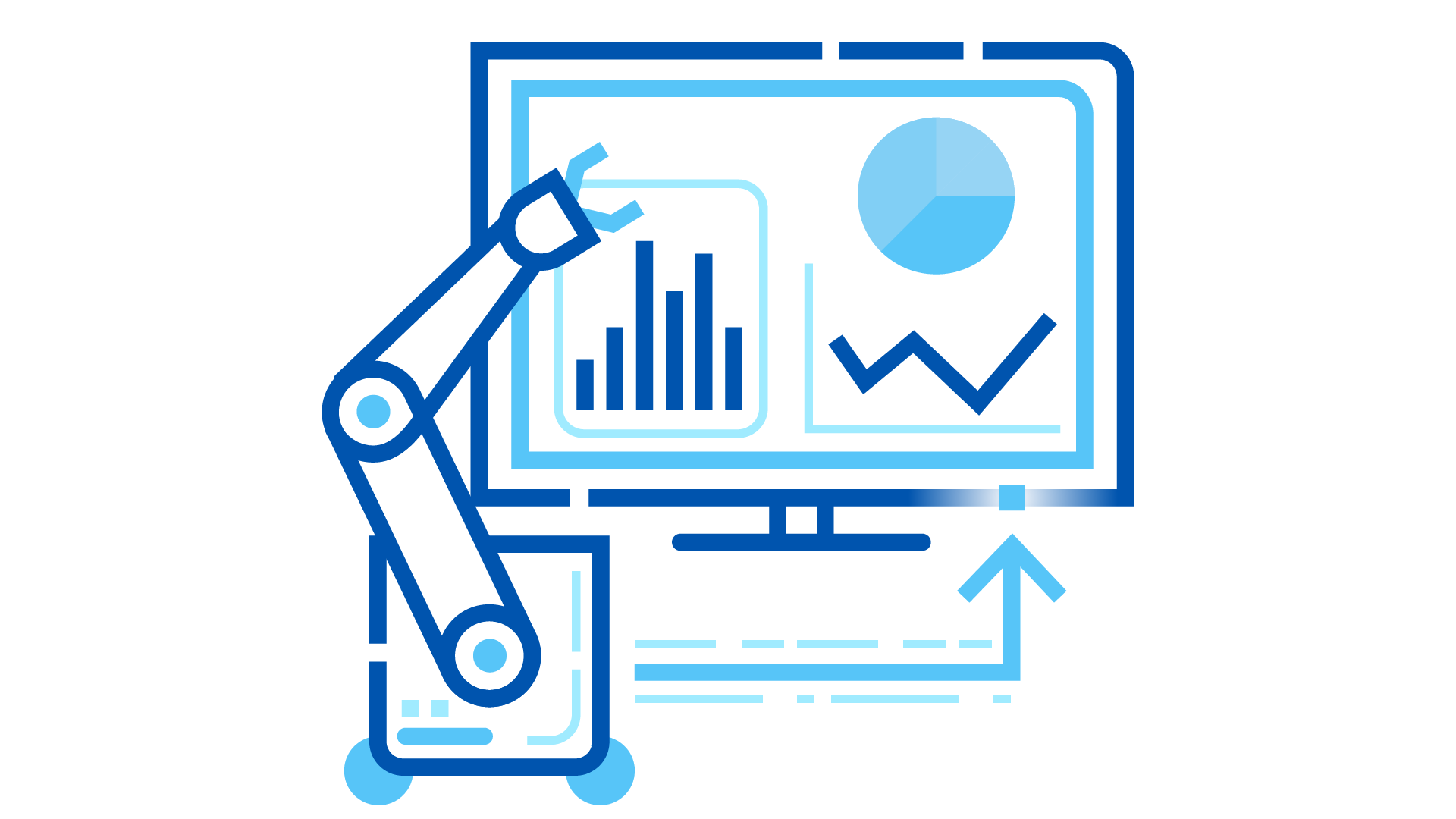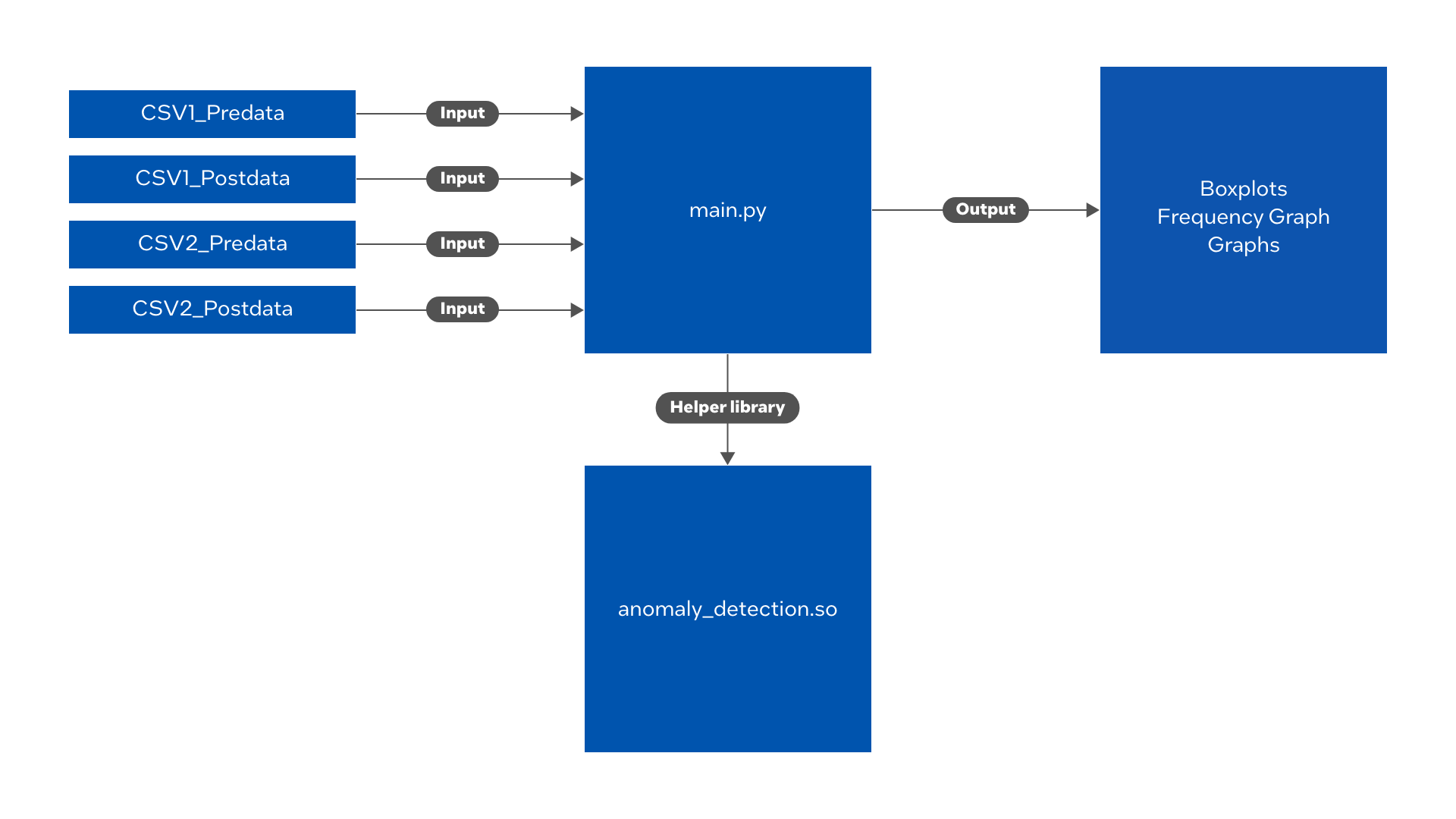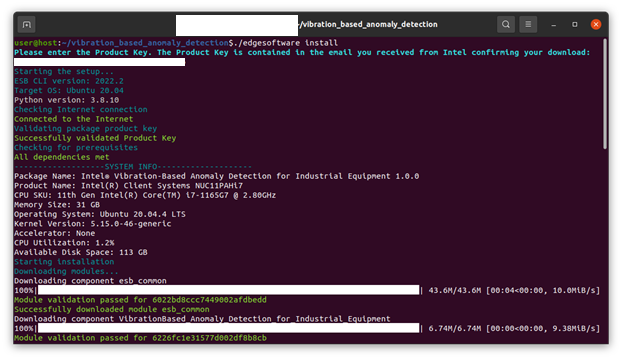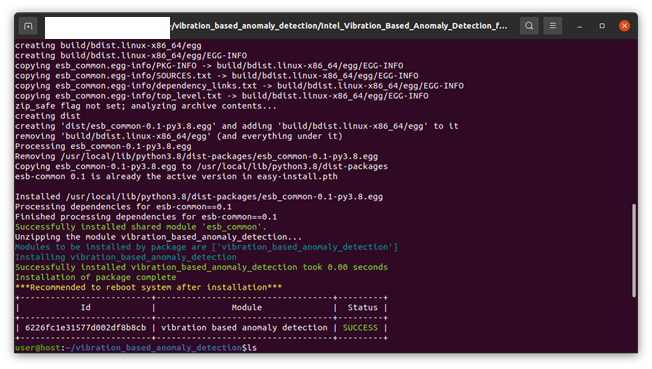Overview
Develop a solution that monitors the health of a robot in a semiconductor wafer manufacturing facility with Vibration-Based Anomaly Detection for Industrial Equipment. This reference implementation offers the following:
- Creates parameters for efficient and real-time remote monitoring and alerting of robot failures with minimum data latency and protection of IP sensitive production data.
- Uses Statistical Process Control (SPC) methods to implement an unsupervised process based on time and frequency domain features of accelerometer signals.
- Reduces yield loss, which can provide significant cost-savings over time.
- Extracts 15 frequency and time domain features from the vibration signals—for both good and bad signals—and generates box plots for visualization of the parameter trend.
Select Configure & Download to download the reference implementation and the software listed below.

- Time to Complete: 15-30 minutes
- Programming Language: Python* 3.8
- Available Software: Ubuntu* 20.04
Target System Requirements
- Ubuntu* 20.04
- 6th to 11th Generation Intel® Core™ processors
How It Works
Vibration-Based Anomaly Detection for Industrial Equipment:
- Helps with condition monitoring, avoiding unplanned breakdowns and discontinuity in manufacturing processes.
- Provides an unsupervised method based on time and frequency domain features of accelerometer signals monitored using Statistical Process Control (SPC) methods.
- Extracts 15 features from the vibration signal, allowing users to compare the feature to a threshold, in response to determining the feature satisfies the threshold and transmit an alert.
- Provides efficient and real-time remote monitoring and alerting of robot failures with minimum data latency and protection of IP sensitive production data.
The architecture diagram below shows the following:
- Main.py is the central Python script that reads input data from .csv files and calls helper functions from .so file for data processing.
- Outputs are generated as Microsoft* Excel* files in the output directory.
NOTE: The .csv data files included in the package were generated using CyberOptics* WaferSense* Auto Vibration System* (AVS) and Parker* Lord* Microstrain* vibration sensors. However, the reference implementation can use any time series data from any type of sensor.

Get Started
Install the Reference Implementation
Select Configure & Download to download the reference implementation and then follow the steps below to install it.
- Open a new terminal, go to downloaded folder and unzip the RI package.
unzip vibration_based_anomaly_detection.zip - Go to vibration_based_anomaly_detection/ directory.
cd vibration_based_anomaly_detection/ - Change permission of the executable edgesoftware file.
chmod 755 edgesoftware - Run the command below to install the Reference Implementation.
./edgesoftware install - During the installation, you will be prompted for the Product Key. The Product Key is contained in the email you received from Intel confirming your download.

Figure 2: Product Key
- When the installation is complete, you will see the message “Installation of package complete” and the installation status for each module.

Figure 3: Install Success
Run the Application
- Go to the working directory:
cd vibration_based_anomaly_detection/Intel_Vibration_Based_Anomaly_Detection_for_Industrial_Equipment_1.0.0/vibration_based_anomaly_detection/anomaly_detection - Set up the Python Virtual Environment. (This is only necessary when running this reference implementation for the first time.) The command will create the virtual environment and install necessary dependencies.
source ./setup_env.sh - Set PYTHONPATH to algorithm binary .so and activate virtual environment by running the below command.
source activate_env.sh - Run the reference app using the below command. This command will read the provided .csv data files and generate Microsoft Excel* charts.
python3 main.py
Interpreting and Using Results
The application analyzes the Normal (Post-repair) and Anomaly (Pre-repair) signals from all 3 channels (axes) of a vibration sensor and generates 4 sets of output files, for a total of 12 files.
NOTE: The .csv data files included in the package were generated using CyberOptics* WaferSense* Auto Vibration System* (AVS) and Parker* Lord* Microstrain* vibration sensors. However, the reference implementation can use any time series data from any type of sensor.
The application extracts 17 time and frequency domain features from a time series signal and generates the following set of output files:
- AVS-BoxPlot.xlsx:
Shows the Box plots of the 6 selected most discriminating time and frequency domain features for both Normal (Post-repair) and Anomaly (Pre-repair) data, for all 3 channels of a vibration sensor.
This file is created for both CyberOptics WaferSense AVS and Parker Lord Microstrain vibration sensors. - AVS-Frequency_Graph.xlsx:
Shows the Frequency spectrum plots along with the Median frequency bar for both normal and anomaly data, for all 3 channels of a vibration sensor.
This file is created for both CyberOptics WaferSense AVS and Parker Lord Microstrain vibration sensors. - S22482-1-01_AVS_YASKAWA_POSTREPAIR_ARM-B.xlsx:
Shows the Running window values of all 17 parameters extracted from all 3 channels of a vibration sensor.
This file is created for Pre-Repair state and for both CyberOptics WaferSense AVS and Parker Lord Microstrain vibration sensors. - S22482-1-01_AVS_YASKAWA_POSTREPAIR_ARM-BGraphs.xlsx:
Shows the plots of all the parameters for all 3 channels of a vibration sensor.
This file is created for Pre-Repair state and for both CyberOptics WaferSense AVS and Parker Lord Microstrain vibration sensors.
Using this application, you can run a single method and retrieve an exhaustive set of Time and Frequency domain parameters and evaluate the change in their Trend and values under Normal and Anomalous conditions.
Summary and Next Steps
You have successfully installed and run Vibration-Based Anomaly Detection for Industrial Equipment.
Use Vibration-Based Anomaly Detection for Industrial Equipment for:
- Condition monitoring of industrial equipment based on vibration signals.
- Real time monitoring of equipment health.
- Parameter analysis for good and bad conditions.
Learn More
To continue learning, see the following guides and software resources.
These links provide details of Frequency domain parameters extracted from the time domain signals:
- ScienceDirect Topics: Median Frequency Overview
- Luscinia on Sourceforge.net: Mean Frequency
- ScienceDirect Topics:Spectral Energy Distribution Overview
- ScienceDirect Topics:Spectral Entropy Overview
Troubleshooting
Uninstall the Reference Implementation Package
To uninstall the package entirely, use the command:
./edgesoftware uninstall -a
Support Forum
If you're unable to resolve your issues, contact the Support Forum.